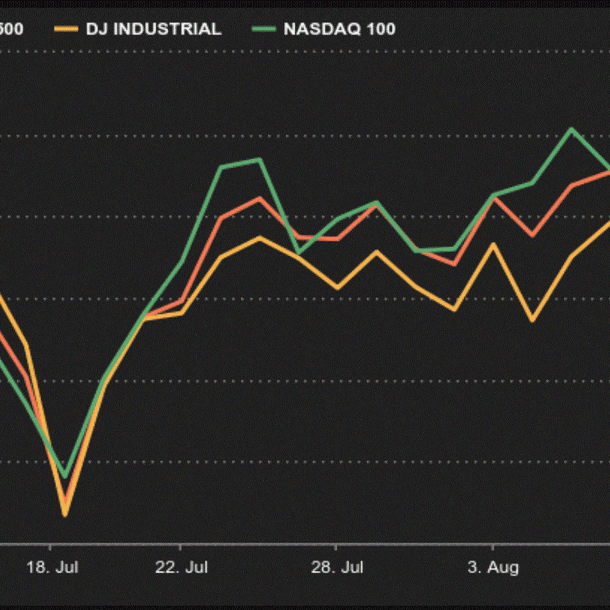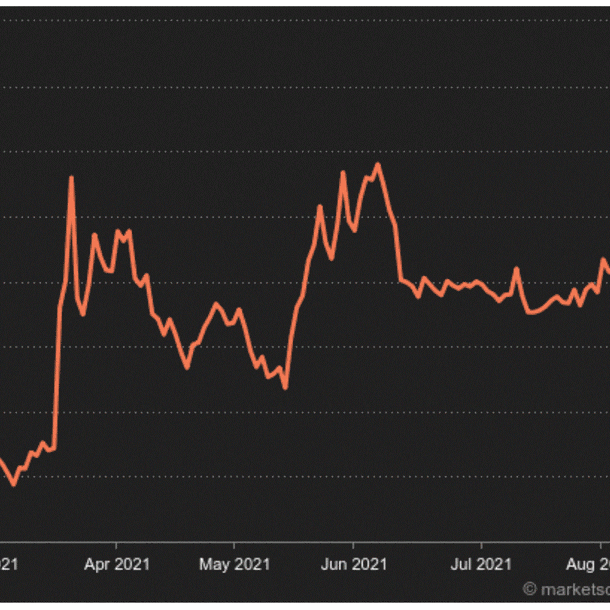|
Friday August 13 | Weekly market update |
 |
Everything seems to be going well for financial markets, which are setting new records day after day, supported by an exceptional earnings season, reassuring macroeconomic data and the almost unconditional support of central bankers. This week, the validation of the US $1 trillion infrastructure plan added to the other positive elements, counterbalancing the persistence of health fears. Even if the summer period is traditionally weaker in terms of traded volumes, nothing seems to stop traders' appetite for risk at the moment. |
| Indexes Over the past week, the major indexes have in unison recorded positive performances. In Asia, the Nikkei rose 0.5%, weighed down by record levels of new contaminations. The Hang Seng gained 0.7% and the Shanghai Composite 1.7%. At the time of writing, Wall Street set new highs. The Dow Jones has gained 0.9% over the past five days, the S&P500 0.6%, while the Nasdaq100, which has been lagging behind, is up 0.1%. In Europe, the CAC40 climbed 1%, coming within 1% of its all-time high set in September 2000. The Dax gained 1.3% as did the Footsie. The SMI is not to be outdone, with a weekly gain of 2.2%. For the peripheral countries of the euro zone, Italy climbed 2.4%, Spain and Portugal 1.3%. Record highs  |
| Commodities This was a positive week for oil markets, which are gaining momentum despite a few headwinds. We are of course referring to Washington's call for stronger action by OPEC+, which is being asked to increase its production further to curb rising prices. The International Energy Agency also revised down its 2021 global demand forecast by 0.3 million barrels per day, pointing to the effects of the spreading Delta variant. Brent is trading at USD 71 per barrel, compared to USD 68.9 for WTI. Two steps back, one step forward. This sentence sums up the trajectory of precious metals since the beginning of the year. However, gold has rebounded nicely this week, as has platinum. Silver and palladium, on the other hand, have stalled at USD 23.4 and USD 2644 respectively. The industrial metals segment is clearly better oriented. Copper prices have resumed their upward trend, at USD 9500. The same is true for aluminum, nickel, zinc and tin. On the soft commodities side, wheat prices are showing a positive weekly sequence, supported by data from the US Department of Agriculture, which revised its global production estimate downward. |
| Equity markets A disruptor in online lending Online lending platform Upstart rose by almost 34% over the past five days, helped by stellar results, and by 337% since January. Founded in 2012 by former Google executive Dave Girouard, Upstart is a growth stock whose share currently reaches $198.4, and whose IPO was held in mid-December. It just posted quarterly revenues of $194 million, up 1,018% from the year-ago quarter, while net income reached $37 million. The company owes its success to the use of an AI platform to find the best loan at lower interest rates, but also to get higher approval rates. It works with banking partners and underwrite loans on its own website: Upstart.com. It generates revenues by taking a small cut on loans. For the third quarter of 2021, it expects revenues between $205 million and $215 million, while adjusted EBITDA should reach between $30 million and $34 million. For the whole year, Upstart guided for revenues of $750 million. Upstart Holdings  |
| Macroeconomics A few months ago, investors were focused on central bank support plans. But since the economic recovery and shortages have put the U.S. into overheating mode, consumer price developments are once again attracting interest. On Wednesday, the U.S. Bureau of Statistics reported monthly inflation of 0.5% between June and July. This is still high, but it is lower than the previous month's 0.9%. Economists got confirmation that the inflation peak is over and that a gradual easing scenario is possible. The fear of a strong intervention by the Fed to calm the boom has faded, to the delight of equity markets, which have continued to advance. In Germany, the ZEW index of financial confidence fell to 40.4 points in August, for the third consecutive month, against the backdrop of fears of a new wave of coronavirus in Europe and slowing growth in China. The decline in inflationary pressures gave a brief but limited boost to the euro, which rose to USD 1.1762. But the greenback, which some saw as suffering this year, has again beaten the odds. It had enjoyed eight consecutive days of gains against the euro prior to this weekend. As for the British pound, it did not benefit much from the strong British second quarter GDP, which was released on Thursday. It is trading at GBP 0.85066 per EUR, while the Swiss franc has declined to CHF 1.0826 per EUR. In the sovereign debt market, the yield on the T-Bond has risen to around 1.36%, whereas it was in the 1.24% zone a week ago. The same trend in Europe where the Bund went from -0.49% to 0.44% over the week. In the same movement, the German 30-year, which had fallen into negative territory last week, returned to 0. The Swiss (-0.42%), Dutch (-0.32%) and French (-0.13%) signatures still offer a negative 10-year yield. There is an important deadline next week, a speech by Fed Chairman Jerome Powell on the evening of August 17. Will the central banker give any information ahead of the Jackson Hole symposium scheduled for August 26-28? It's a mystery. USD/EUR pair  |
| A record bonanza While traders are wondering about the endless debt of central banks, equity markets are still doing well. The expression "markets are in good shape" makes sense as European equities close on ten consecutive records and US equities start their 48th record of the year. However, there is nothing illogical about this exuberance. The economy is back to full speed, interest rates are low and companies are reporting very good results. There remains the question of Coronavirus, which still divides specialists, but which has not, for the moment, dampened investor morale. |

 By
By 














